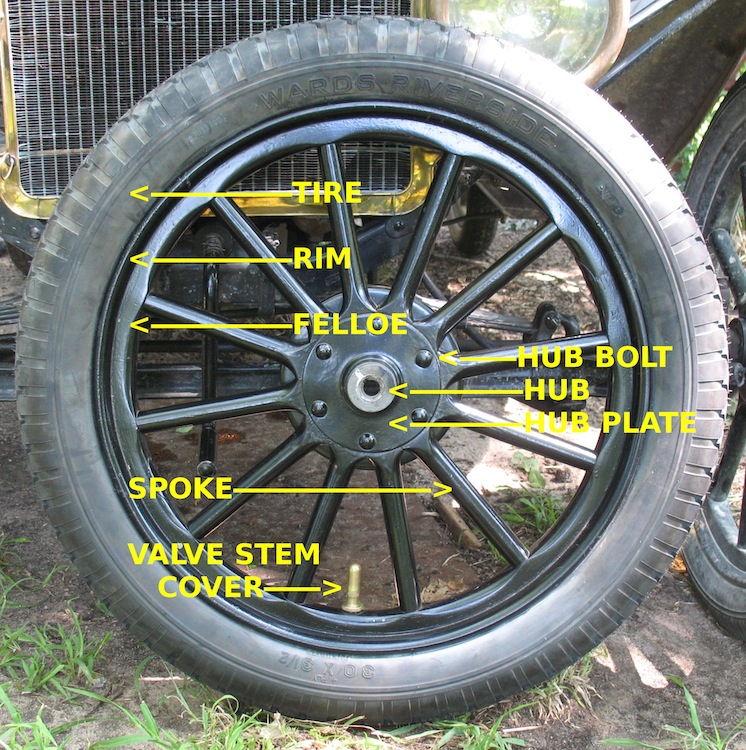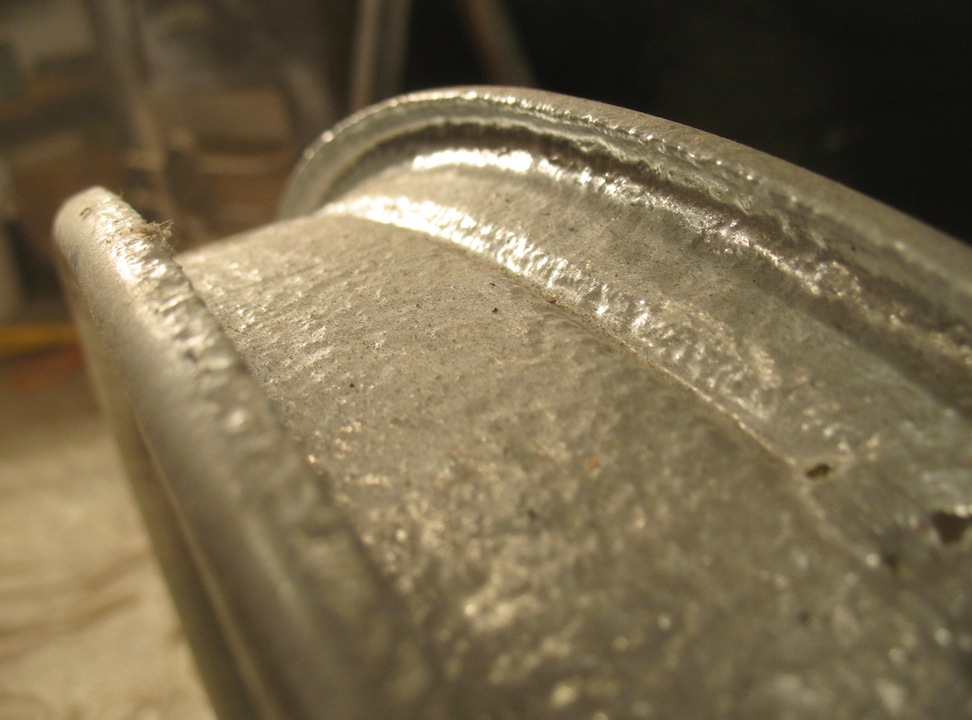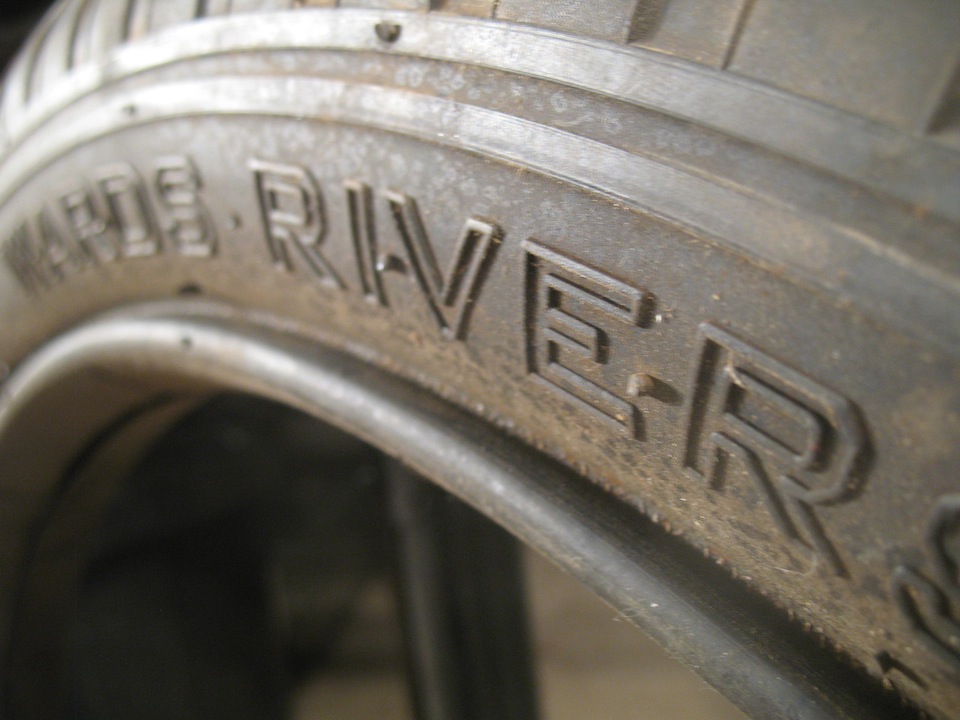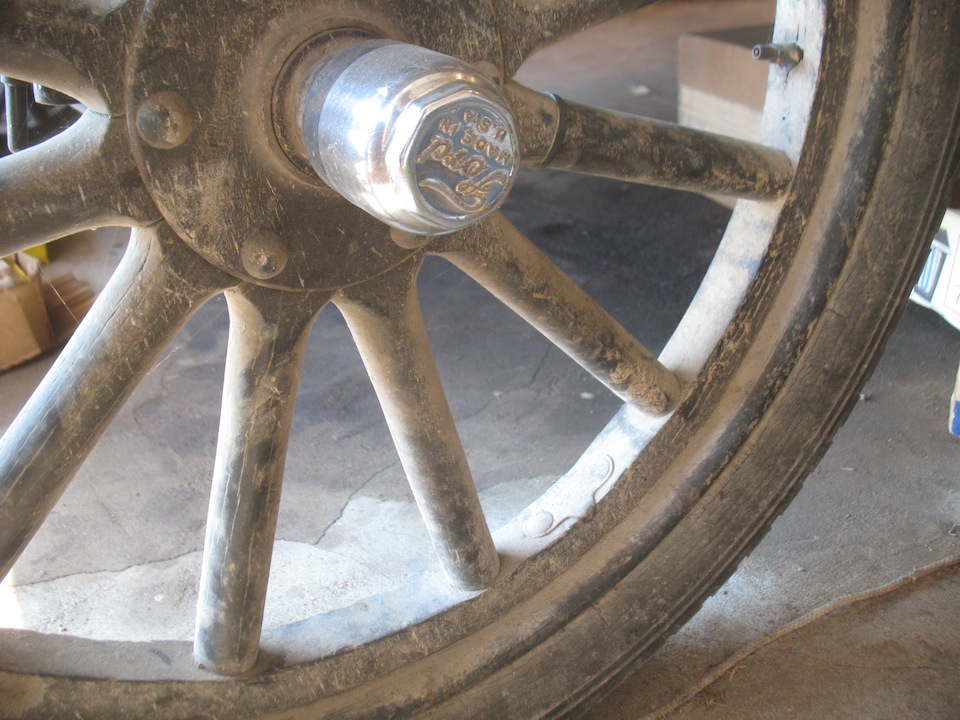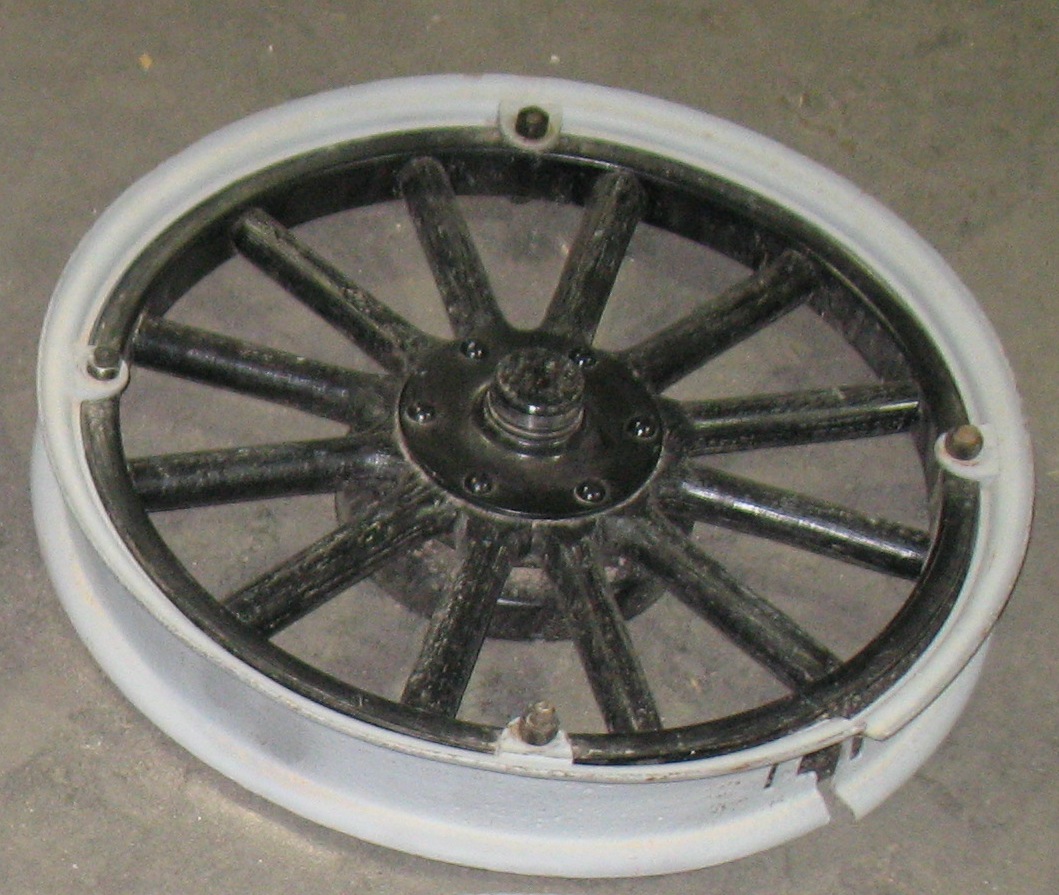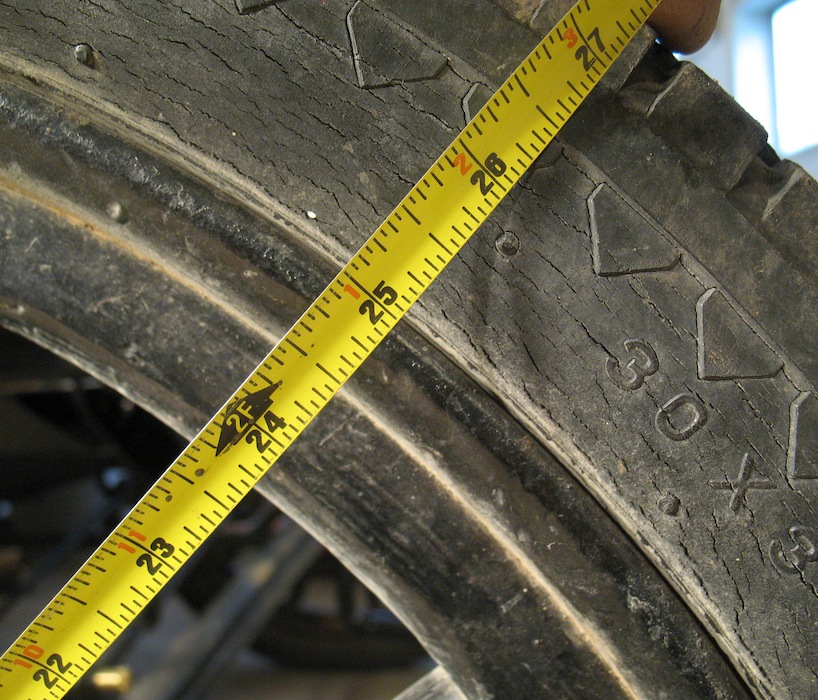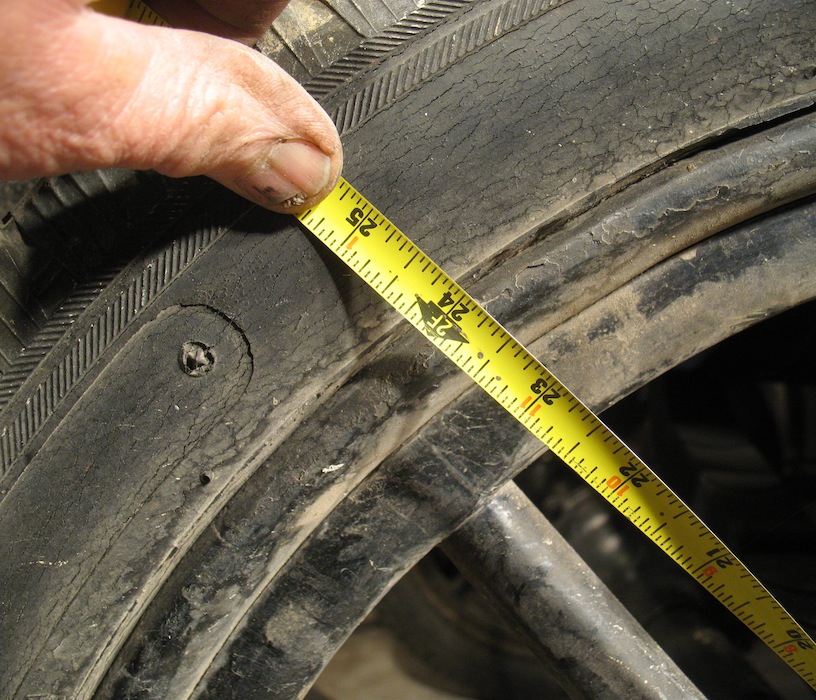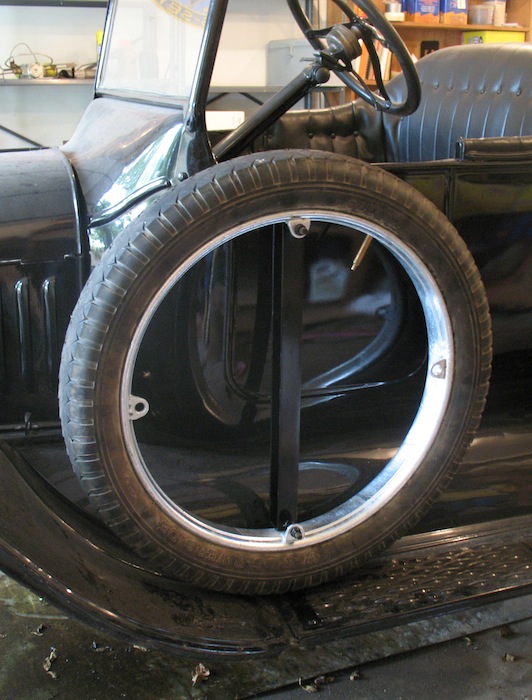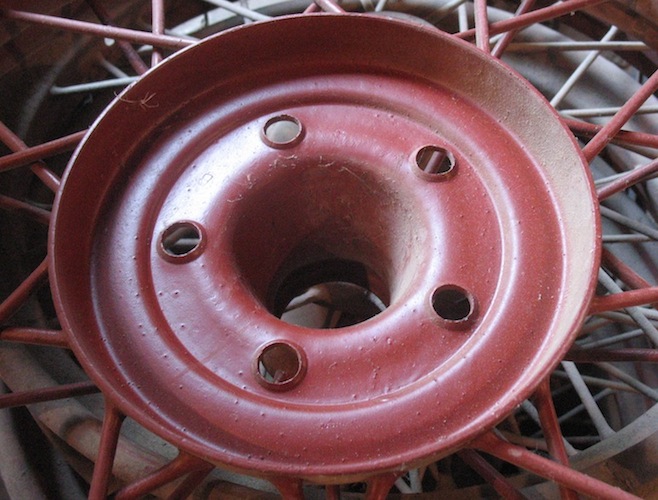Until the
last two years of production when wire wheels became
available, all Model T Fords left the factory with
wood wheels. They were painted body color. So-called
"natural" wheels became available in late 1925, but
you will be hard pressed to find period photos of
Model T Fords wearing them. They are almost entirely a
modern fad. Here's a typical Model T wheel with parts
identified.
TIRE: The
first tires were white and had no tread. In a few
years treads were added. When it was discovered that
carbon made tires last longer, they became gray, then
black.
RIM: The metal part of the wheel that holds the tire. Before 1919 rims were painted body color (beginning about 1914, black). When demountable rims were adopted in 1919, they were galvanized (zinc plated). Today folks often use the cheaper alternative of aluminum paint. There is a persistent superstition that rims were "cad plated". This is bogus. Commercial cadmium plating came in the thirties, after Model T production ended.
FELLOE: The round part of the wheel that holds the rim. Felloes were always wood until 1919 when demountable rims were introduced. Wheels with demountable rims had steel felloes. Non-demountables continued to have wood felloes. Note the rounded corners on this felloe. Round felloes continued until late 1917 or early 1918. The square felloes that followed had truly square corners for a short time, but soon were given a ¹⁄₁₆" radius.
HUB BOLTS: These hold the spokes and the flange (hub plate) to the hub. The bolts on old wheels are often damaged and need to be replaced. Beware of low quality reproductions.
HUBS: Until 1911 rear hubs had straight holes to fit on straight axles. From 1911 on, axles were tapered and the hubs had tapered holes to fit. Front hubs had ball bearings until 1919 when Timken roller bearings were introduced on trucks and closed cars. Soon all cars with demountable wheels came with roller bearings, but ball bearings continued on open cars with non-demountabler wheels until 1925.
HUB PLATE (FLANGE): Early hub plates were 5½". From 1911 on through the end of production in 1927 they were 6".
SPOKES: They were always hickory. In cross-section they were oval until 1921, then round.
VALVE STEM: The metal stems used on Ford wheels were Schrader 777. The Schrader 888 stems are the same diameter but a little shorter. They can also be used. Other sizes (Schrader 724 and 725) are wider, but can also be used. Their advantage is that the current reproduction covers will fit them. More information on stems is here.
RIM: The metal part of the wheel that holds the tire. Before 1919 rims were painted body color (beginning about 1914, black). When demountable rims were adopted in 1919, they were galvanized (zinc plated). Today folks often use the cheaper alternative of aluminum paint. There is a persistent superstition that rims were "cad plated". This is bogus. Commercial cadmium plating came in the thirties, after Model T production ended.
FELLOE: The round part of the wheel that holds the rim. Felloes were always wood until 1919 when demountable rims were introduced. Wheels with demountable rims had steel felloes. Non-demountables continued to have wood felloes. Note the rounded corners on this felloe. Round felloes continued until late 1917 or early 1918. The square felloes that followed had truly square corners for a short time, but soon were given a ¹⁄₁₆" radius.
HUB BOLTS: These hold the spokes and the flange (hub plate) to the hub. The bolts on old wheels are often damaged and need to be replaced. Beware of low quality reproductions.
HUBS: Until 1911 rear hubs had straight holes to fit on straight axles. From 1911 on, axles were tapered and the hubs had tapered holes to fit. Front hubs had ball bearings until 1919 when Timken roller bearings were introduced on trucks and closed cars. Soon all cars with demountable wheels came with roller bearings, but ball bearings continued on open cars with non-demountabler wheels until 1925.
HUB PLATE (FLANGE): Early hub plates were 5½". From 1911 on through the end of production in 1927 they were 6".
SPOKES: They were always hickory. In cross-section they were oval until 1921, then round.
VALVE STEM: The metal stems used on Ford wheels were Schrader 777. The Schrader 888 stems are the same diameter but a little shorter. They can also be used. Other sizes (Schrader 724 and 725) are wider, but can also be used. Their advantage is that the current reproduction covers will fit them. More information on stems is here.
